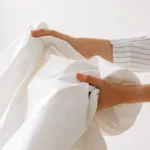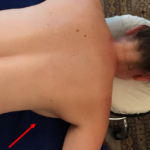How to Screen Predators with Robust Verbal and Hands-On Massage Interviews
January 2, 2025

Protect Your Clients and Massage Business From Hiring Mistakes
The massage profession is attractive to predators because they can be alone in a room with a vulnerable client who is wearing little to no clothing. That’s why it’s vital for employers to protect their clients and their massage business from hiring mistakes by screening for predators with a robust verbal interview and a hands-on massage, or practical, interview.
The Verbal Interview
The verbal interview is a crucial first step in screening for sexual predators and individuals with predatory tendencies. This initial interview should take between 30 and 45 minutes and ask the same questions for every applicant, with follow-up questions as needed.
However, in the industry’s desperation to hire therapists, they often ask softball questions and miss out on opportunities to uncover candidates’ predatory tendencies. This is a big mistake. Hiring a predator therapist because they didn’t take the time and effort to screen them properly is a very costly error.
Add Red-Flag Questions to Your Verbal Interview
Most spa interviews leave out difficult, challenging red-flag questions because they don’t want to scare candidates away. The most effective strategy I’ve found is to have all interviews start with rapport-building and fact questions but then pivot to 10-12 red flag questions, such as:
- Has a client ever asked you something that made you uncomfortable? If yes, what did you do?
- Have you ever had a situation when a client was inappropriate with you? If yes, how did you handle that?
- If you ever felt attracted to a client, how would you handle those feelings?
- If you discovered that a fellow therapist was doing something inappropriate, what would you do?
Asking red-flag challenging questions allows them to discover more about a candidate than any softball question. In addition, having dedicated interviewers who are trained in interview techniques is much more effective than having only a manager do the interview. Especially for non-verbal cues that might be missed otherwise. Finally, the best organizations have the manager do a second verbal interview to see if similar questions and answers line up. They need to make sure they can screen out as much red flag behavior as possible before moving the candidate on to the practical interview.

The Practical Interview
An important next in the screening process is the practical interview. The best person to give the practical hands-on interview is an experienced lead massage therapist, a massage technique teacher, or an employee who has those skills. Some organizations have the owner or the manager do the practical, but this is a bad idea.
When a practical exam is administered by someone not qualified to assess an applicant’s skill level, the assessment will be based on whether or not the interviewer liked the massage. Most managers do not have in-depth knowledge of the massage skills needed to be a good therapist, but a qualified massage therapist will provide an accurate assessment based on a thorough evaluation of the applicant’s skills and boundaries.
What to Look for
During the practical interview, applicants should be rated on their ability to moderate their pressure from mild to deep, draping technique, the quality of hand contact, clear massage therapy techniques, transitional movements, pace, body mechanics to avoid burnout, and treatment construction.
The practical interview can also be a useful tool for assessing boundaries:
- Physical boundaries, such as how close the applicant works to sensitive areas, if there is full or partial hand contact, and whether other parts of their body make contact with the client/administrator of the practical interview
- Time boundaries, where the interviewer checks if the applicant covers everything in the time allotted or if they run overtime
- Verbal boundaries, for example, do they check in about the appropriate pressure a few times, are they quiet, or do they make small talk during the practical?
Disqualifying Authority
The massage therapist who does the practical interview should have disqualifying authority not to hire the applicant therapist. In some organizations, the manager can overrule the practical interviewer, but this defeats the purpose of the practical interview.
Other Steps in Identifying a Predator
The verbal interview and the practical interview are merely two touch points for screening out inappropriate hires.
And there are many additional steps to identifying a predator that your massage business can employ:
- Empowering practical interviewers with disqualifying authority
- Checking at least two professional references
- License verification
- Yearly background checks
- Joining the National Association of Spa Franchises (NASF)
- A second verbal interview
- A 5–6-hour live ethics training should be a significant part of the onboarding process, designed to educate and further screen new hires.
- Empowering onboarding educators with disqualifying authority
- An attention button or call button
- Posting a Code of Ethics that the business enforces
- An explicit Code of Behavioral Conduct
- A No Contact Zone chart
- A Secret Shopper program
No screening is 100%, but if a massage business follows these sexual assault prevention guidelines, they will be protecting their clients and business as much as they possibly can.
*Adapted from documents produced by the Massage Industry Counsel on Ethics
If you’re a lawyer who is currently involved in a sexual assault case and needs an expert witness with a massage or spa background, schedule a conversation with Dr. Benjamin.
Ben E. Benjamin holds a Ph.D. in Sports Medicine and has been an expert witness in cases of sexual assault in a massage/spa setting since 2004, advising lawyers, testifying in depositions and trials, and writing reports. His expertise extends beyond massage therapy and ethical behavior. He also advises spas, both large and small, on the creation of comprehensive sexual assault prevention strategies that ensure safe and ethical practices in the industry.
Related Posts

Expert Witness Insight: Sexual Assault and Poor Draping in Massage Therapy
Draping in massage therapy means securely covering the body with a sheet, blanket, and/or towel so that the private areas of the body are covered, feel safe, and are not ever exposed. These areas include the genitals, the female breasts, and the lower buttock, where the gluteal cleft is, just below the coccyx bone at […]

How High is Appropriate to Massage on the Upper Inner Thigh?
How High on the Upper Inner Thigh to Massage? The upper inner thigh is one of the gateway areas where predator massage therapists begin their sexual assault. The thigh should be draped so that the pelvis and the inner thigh are securely covered. The drape is generally a sheet tucked under the thigh and […]

Expert Witness Insight: When Massage Therapists Work on the Buttocks
When massage therapists work on the buttocks, clear communication is needed so the client feels safe. This area of the body is not usually touched by anyone other than an intimate partner. Consent is Required for Work on the Buttock in Massage Work in this sensitive area necessitates a conversation with the client before […]

Expert Witness Insight: Touching the Side of the Breast When Lying Face Down
Touching the Side of the Breast When Lying Face Down I would say that more than 99% of massage therapists are ethical professionals who would never commit a sexual assault on anyone. Massage therapists who are sexual predators are usually male and frequently test and groom the clients they choose to assault sexually. For example: […]

Working On the Chest in Order to Move to the Breast
Working On the Chest in Order to Move to the Breast When working on the pectoral muscles, the drape is lowered slightly. The pectoral muscles can be massaged appropriately, working not more than one or two inches below the collarbone. The point is that therapists are trained to work on the pectoral muscles while avoiding […]

